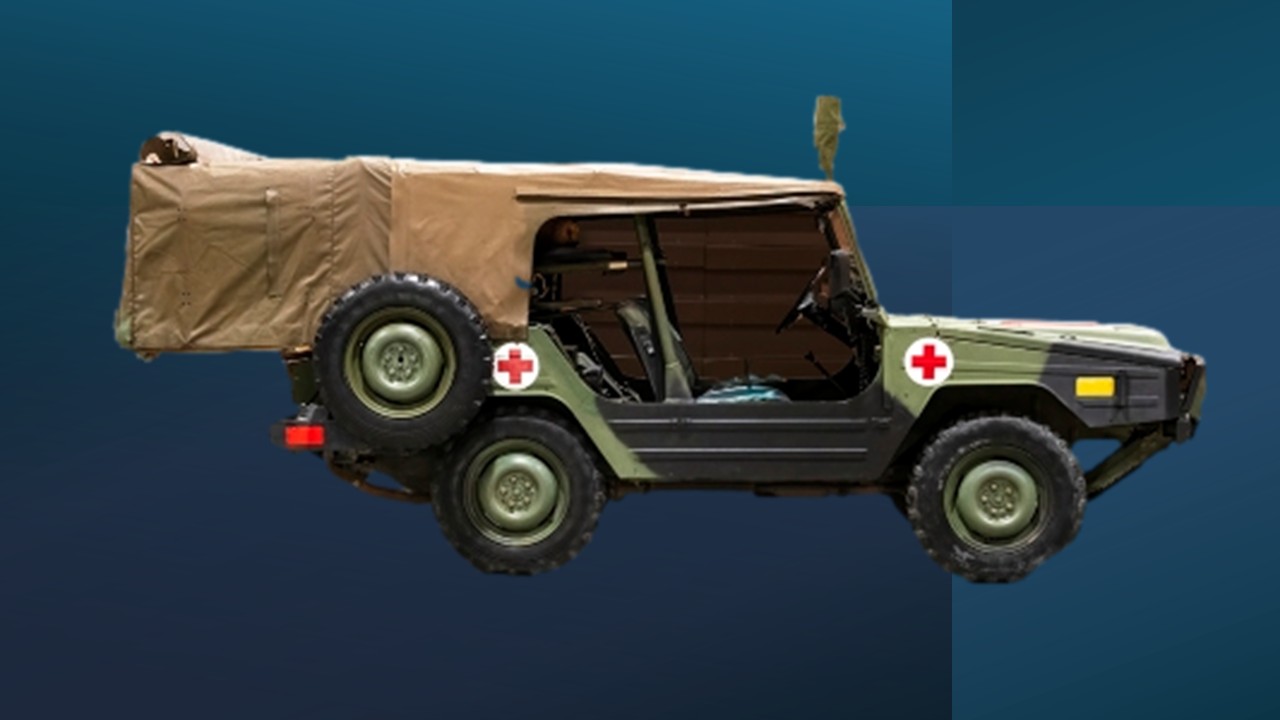Vintage Military Vehicles
The Museum has a total of 15 registered and insured vintage military vehicles which are maintained in “Collector” condition and in running order. The following photographs, courtesy of the Victoria Camera Club, provide a preview of the museum’s collection which is on display at the museum.
Daimler (UK) Ferret – Car, Scout, Mk 2/3 (4×4)
The Canadian Army was one of the earliest users of the Ferret, with 124 Ferret Mk 1’s being purchased for issued to Canadian Army armoured regiments, as part of each regiment’s reconnaissance squadron. Canadian Ferrets were not equipped with turrets. The vehicle pictured represents one borrowed from British Army stock on Canada’s first deployment to Cyprus in 1964, on UN Peacekeeping duties, until Canadian Ferrets arrived in theatre. The markings are correct for the Lord Strathcona’s Horse (Royal Canadians)
Click here for specifications
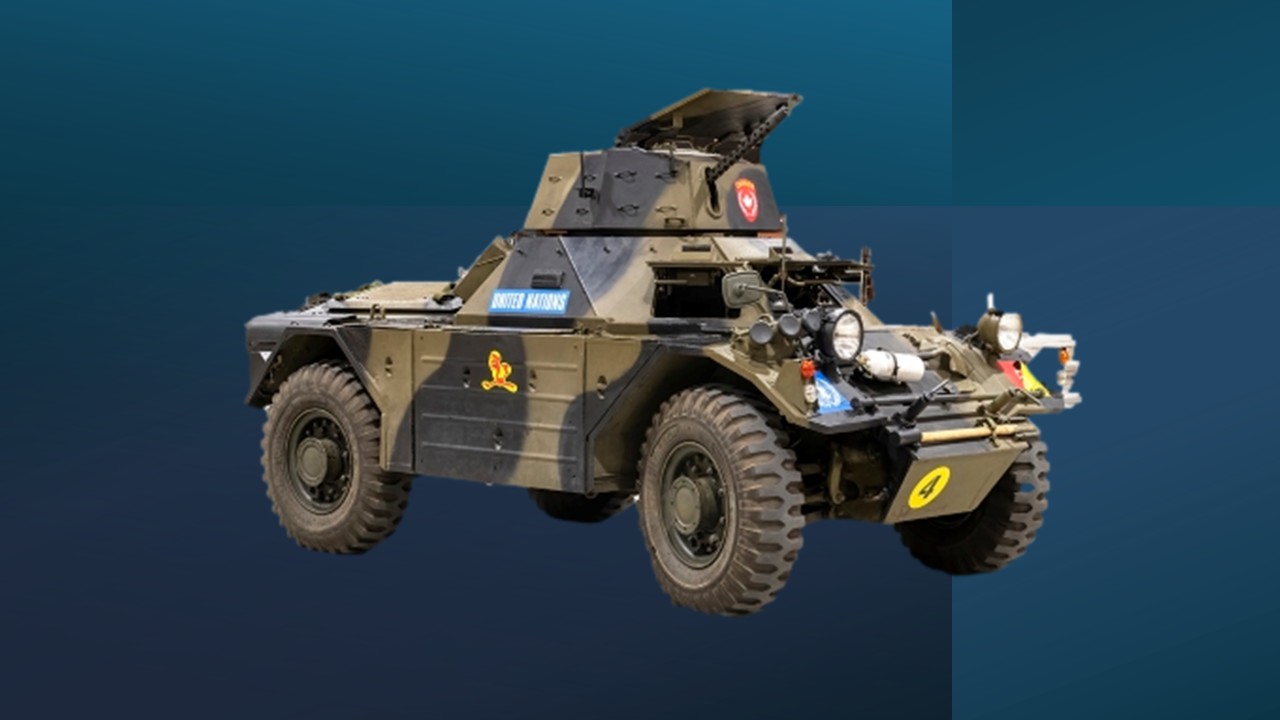
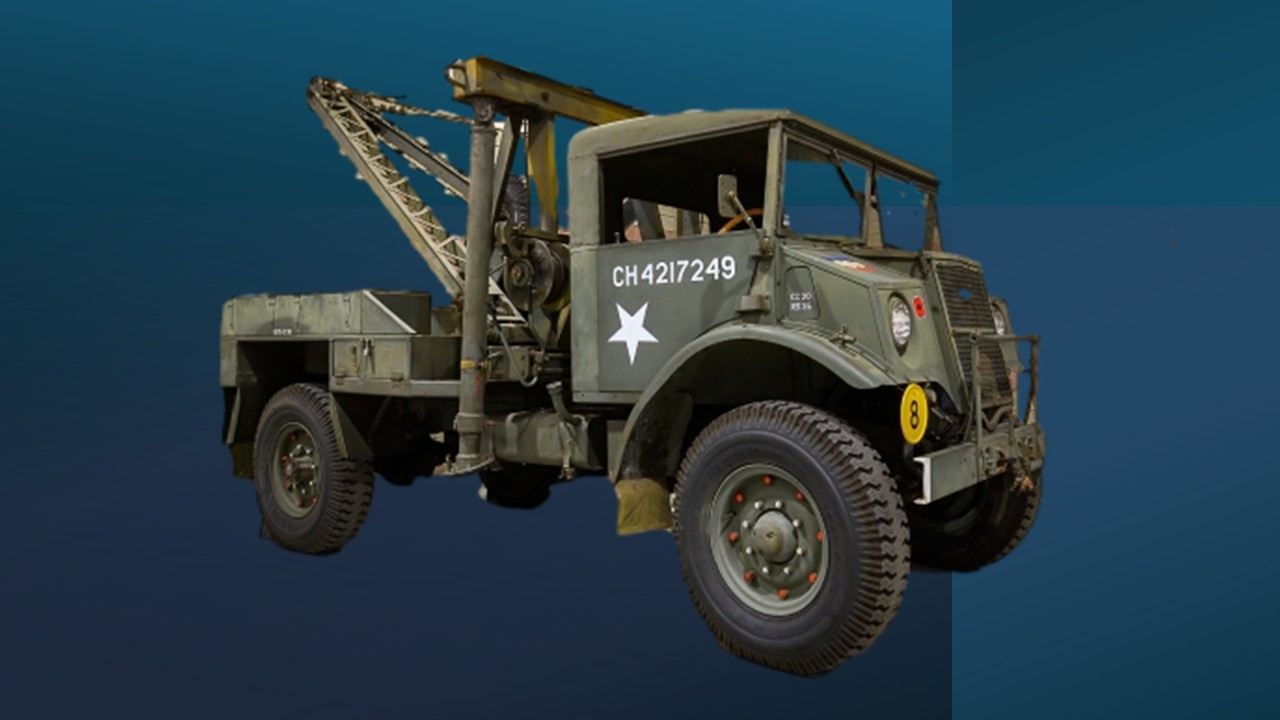
1944 Chevrolet Canadian Military Pattern (CMP)
Chevrolet and Ford Canada worked together to produce over 400,000 CMP vehicles during the WWII, supplying vehicles to all British Commonwealth countries and the Soviet Union.
All CMP vehicles were designed with a standard cab, of which there were three variations: and fitted to a standard chassis and drive train. Most parts were interchangeable between Chevrolet and Ford built vehicles, which allowed a wide variety of vehicle configurations.
The snub-nosed design was adopted to allow for a more compact design for transport by ship. The forward-angled windscreen was a Canadian innovation to prevent glare and reduce the risk of reflected light visible to enemy aircraft.
Click here for more information
CAR, Light, Utility, 5 cwt, 4X4 “Jeep”
The Jeep was the result of a request by the Army in 1940 for a general-purpose vehicle that was small, lightweight, had four-wheel drive for cross-country travel, and capable of carrying a light machine gun.
The Canadian Army was the first foreign purchaser of the Jeep. In WWII, Canada ended up with jeeps made by Bantam, Willys-Overland, and Ford (USA)
The Jeep fulfilled many roles during the war, these ranging from conducting combat reconnaissance missions, the vehicle from which commanders led their units, hauling trailers full of vital supplies across the battlefield, carrying aircrew to their aircraft, carrying litters bearing wounded troops, transporting generals and admirals to work or pulling light artillery pieces into battle. On D-Day in France it rode into battle in gliders and landed with the assault waves in Italy and France, as well as carrying the victorious Allies into Rome, Paris and Berlin.
The White Star displayed on this vehicle was adopted as an “Allied Air Recognition Symbol” for all Allied vehicles in the June 6, 1944, Normandy invasion. The use of the White Star by United Nations forces was continued in the Korean conflict 1950 – 1953. Canadian soldiers were not keen on displaying what was viewed as a US Army star and frequently painted them on at an angle as a form of protest.
The Jeep is often credited with being one of the important factors in helping the Allies achieve victory during WWII.
Click here for more information
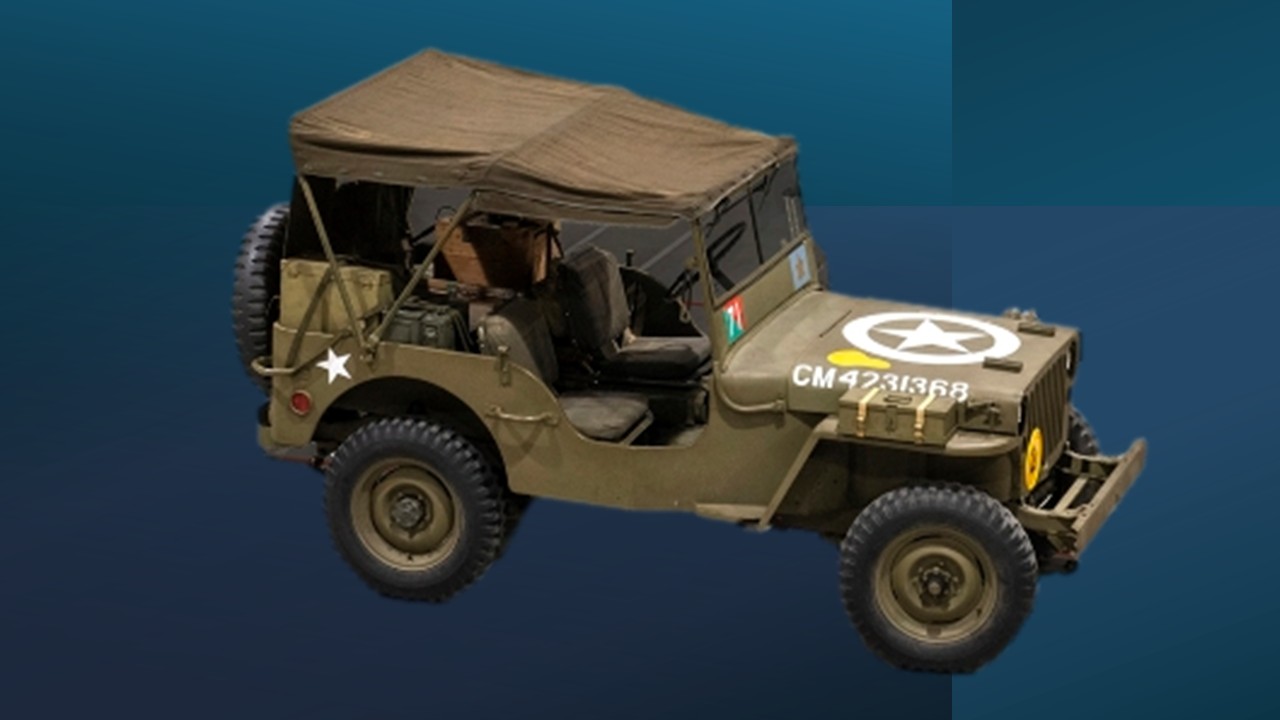
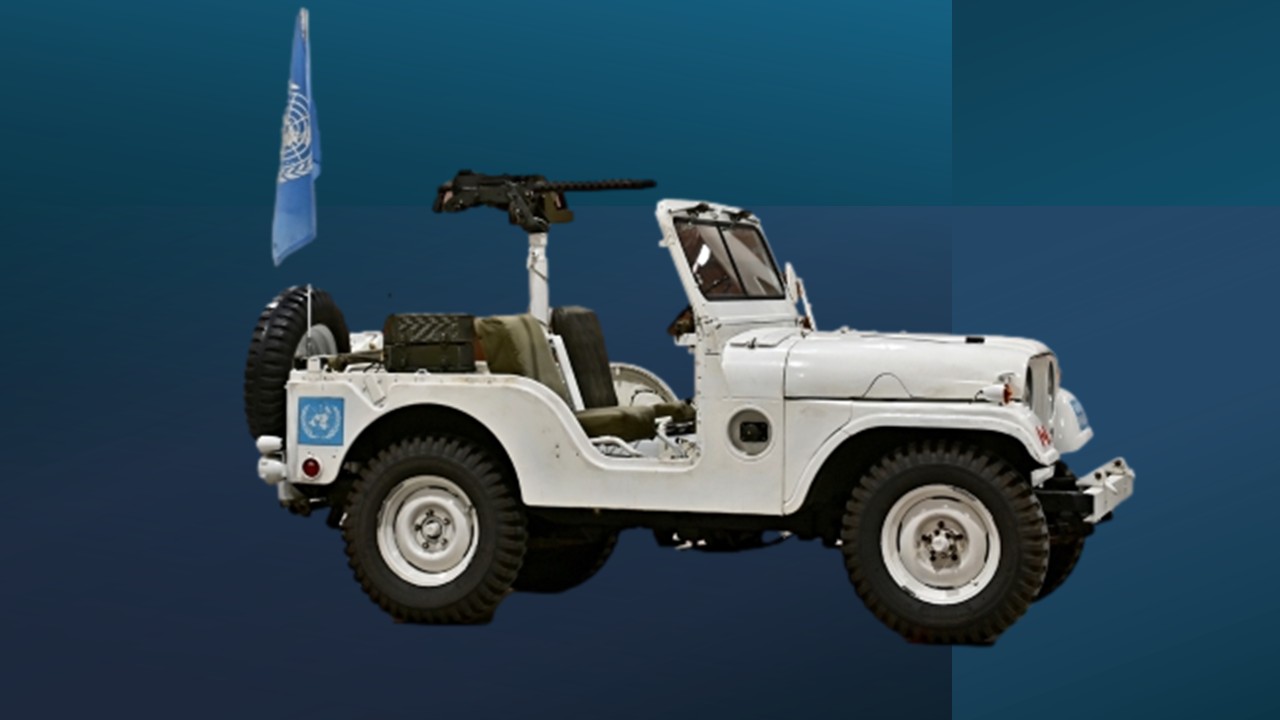
Truck, Utility, ¼ Ton, 4×4,M38A1CDN2 “Jeep”
The M38A1 was built by Ford in Canada beginning in the early 1950s, as a replacement for the M38. These were designated M38A1 CDN and were issued to the Canadian Army where they would be in use up into the 1980s. In 1967, a further 800 M38A1Jeeps were ordered from the Kaiser Jeep plant in Windsor, Ontario, and were designated the M38A1 CDN2.
The M38A1 was a general utility truck, capable of employment in many roles and used by many different branches, including military police, signals, reconnaissance and medical, in addition to carrying personnel and cargo. The M38A1 was also capable of operating completely submerged.
In addition to soldier’s personal weapons, e.g. rifles, pistols, etc., light and heavy machine guns could be mounted on purpose-built pedestals when employed in a reconnaissance role.
The vehicle on display represents a Jeep deployed with the Canadian contingent to the UN forces in Cyprus – UNFICYP.
Click here for more information
M37 CDN 3/4 Ton Truck
The M37 CDN was the Canadian version of the US Dodge M37, which was produced for the US military starting in 1952. It was a durable and reliable truck, but had some weaknesses, such as a tendency for connecting rods to fail at high RPMs due to the engine’s low gear ratio.
Over 4,500 Canadian versions that were produced by Chrysler Canada between 1951 and 1955. The Canadian trucks were similar to the US made versions except for the larger, Canadian produced 251 cubic inch engine and improved transmission. Other differences included the standardized fitting of a metal “Arctic Cab” instead of the canvas top seen on US examples. As with the US versions, Canadian trucks were made with and without, front mounted PTO driven winches.
Besides cargo carriers, other models included: command, radio, line and ambulance variants, with the addition of Special Equipment Vehicle (SEV) kits.
Click here for specifications
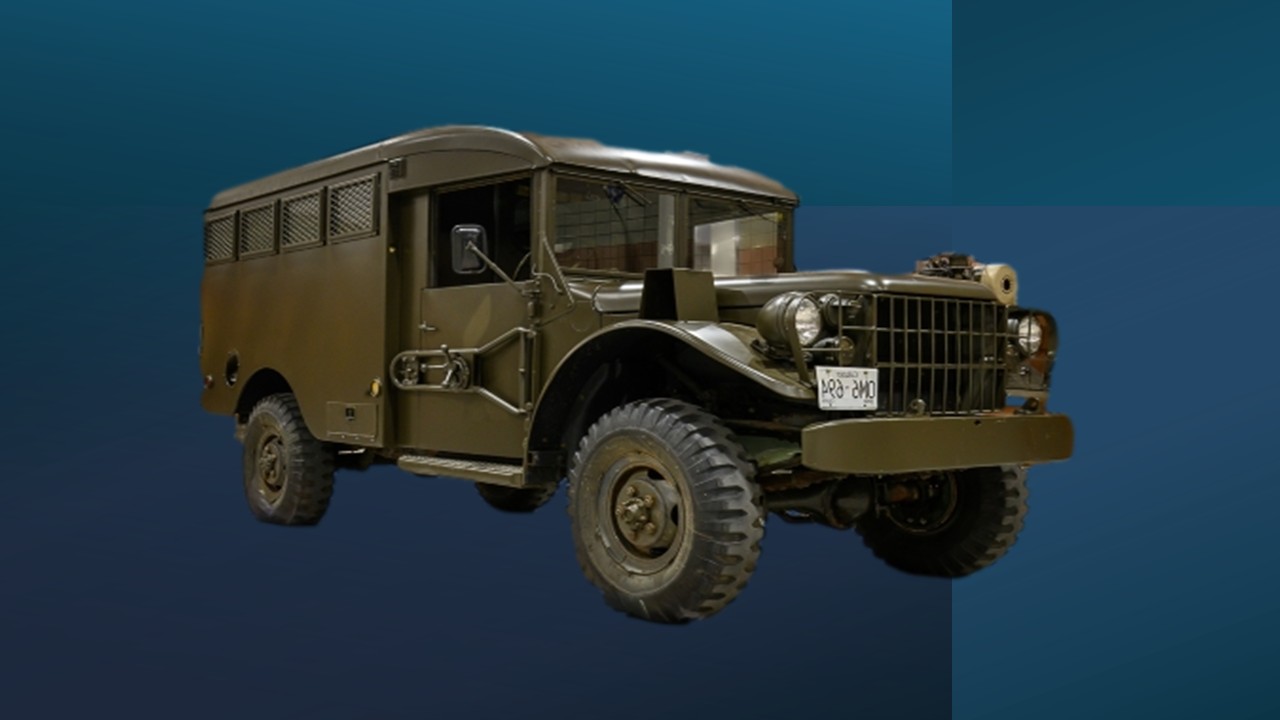
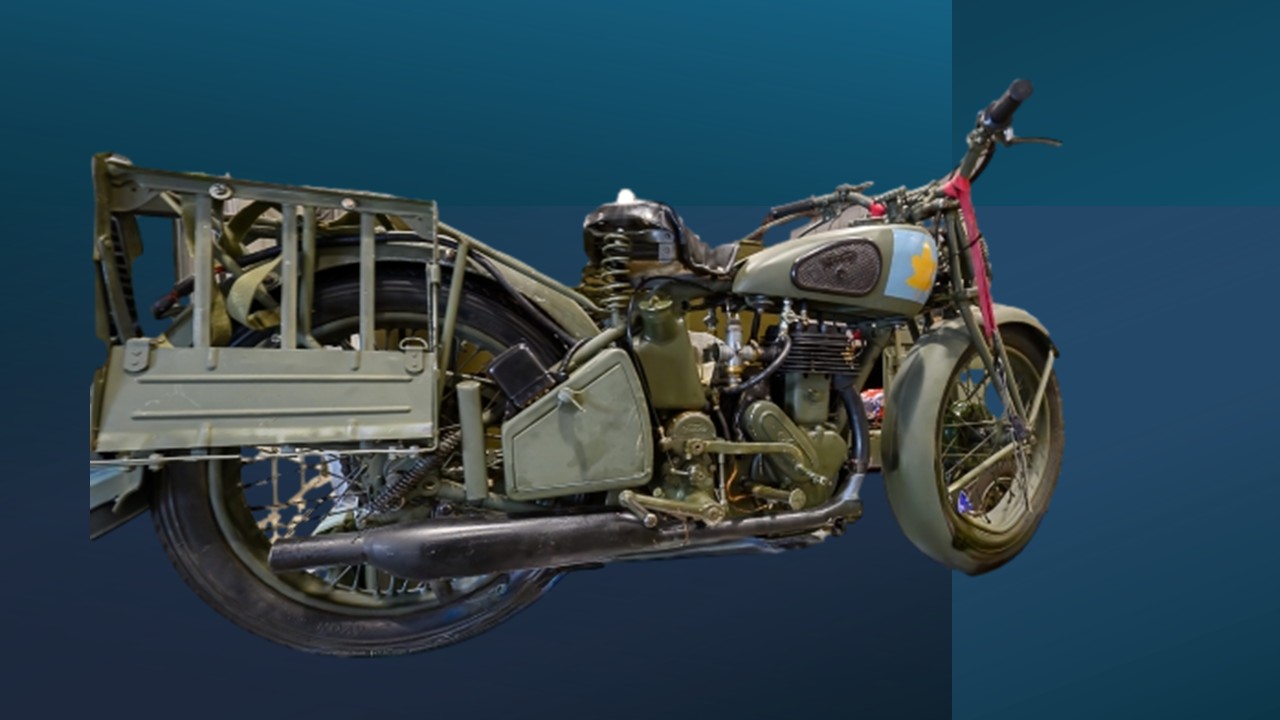
Norton WD16H Motorcycle
Nearly 100,000 Norton WD 16H motorcycles were produced by the Norton Motorcycle Company (UK) during the Second World War. In addition to the British Army, Nortons were supplied to the Commonwealth Armies of Canada, Australia, New Zealand, and India.
The motorcycle was employed in many roles, including: Message Delivery (Dispatch Rider), Auxiliary transport vehicle, Checking telephone communication lines and Military Police duties.
After the end of hostilities in 1945, there were many thousands of Norton Model 16H motorcycles around the world. The Canadian Army continued to use the Norton until the end of the 1950s.
In early 1940, Canada placed an order for 4000 Norton Motorcycles for use by the Canadian Army. This particular motorcycle was produced between 1940 and 1942 (exact details cannot be confirmed), and represents a machine used by a unit of the Royal Canadian Corps of Signals, 3rd Canadian Infantry Division, circa 1944, in North-West Europe.
Click here for specifications
1987 VW Iltis Canadian
The Iltis was a direct replacement vehicle for Canada’s aging fleet of M38A1 Cdn 2 and Cdn 3 Jeeps and M151A2 MUTTs. Bombardier Canada, who had obtained exclusive worldwide manufacturing rights for the Iltis, received a contract for 2500 vehicles in late 1983, with eight different configurations to be produced, with one basic version, and seven “kitted” variants.
The seven variants to the basic vehicle include:
- Basic vehicle with a 100-amp alternator;
- TOW (Tube-launched, Optically-tracked, Wire-guided) A/T Missile Launcher;
- Cable Layer;
- Command and Reconnaissance;
- Ambulance;
- Ceremonial; and
- Vehicle with a Tail-Gate.
The Iltis has seen service not only in Canada, but overseas in Germany with Canada’s 4 Mechanised Brigade Group in NATO, and with Canada’s UN missions in Cyprus, Haiti, and Yugoslavia, and later in Afghanistan.
By 2009, the entire Iltis fleet had been formally retired and disposed of. The vehicle on display was used by 11 Field Ambulance.
Click here for specifications
